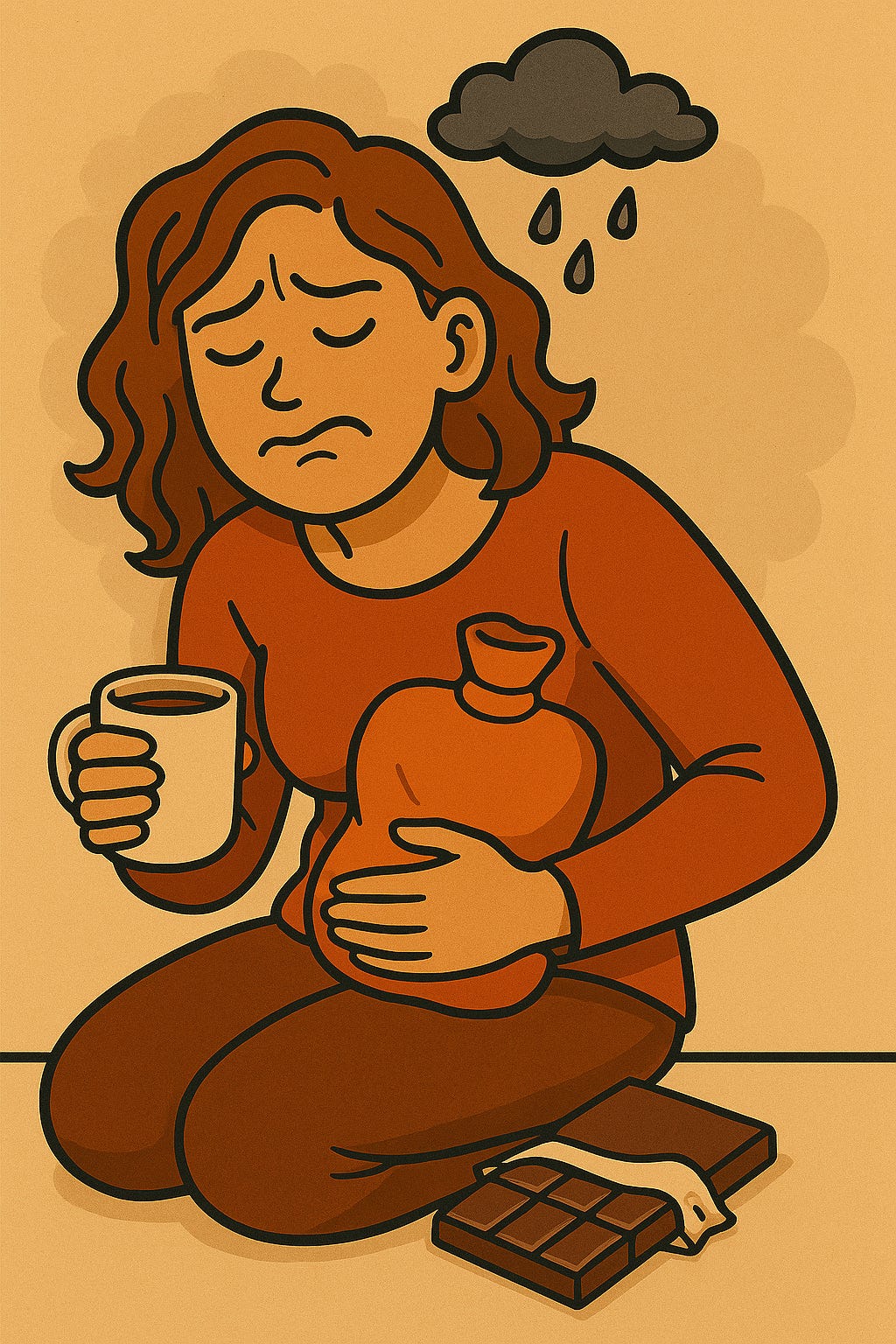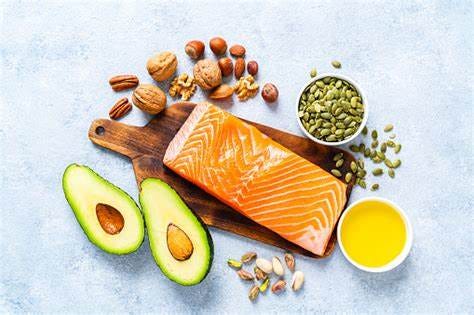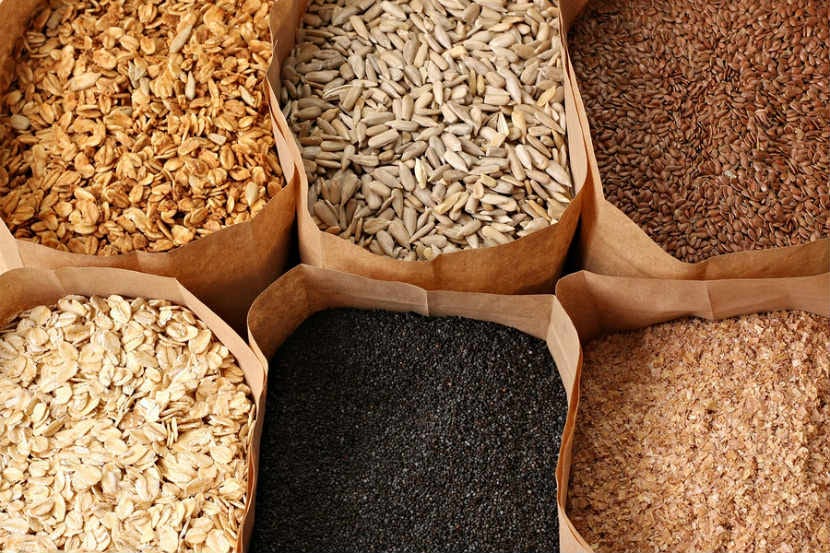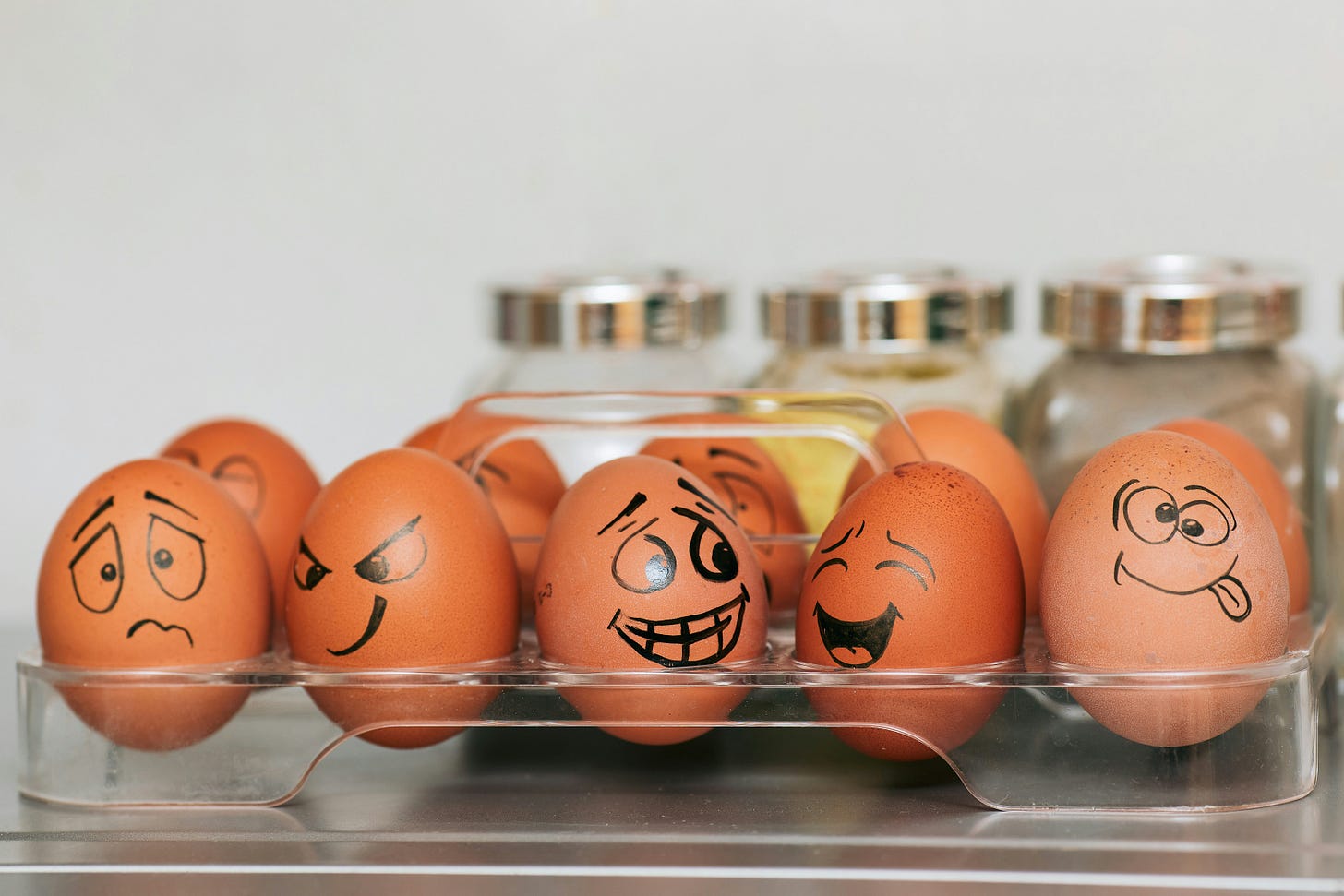Why Women Crave More: A Comprehensive Guide to Breaking the Cycle of Food Cravings
A Doctor’s Battle with Her Own Cravings
Dr. Priya, a 35-year-old gynecologist from Delhi, thought her medical training gave her control over her health—until she found herself reaching for chocolates every night after work. “I’d feel this urge I couldn’t shake, especially during my period or stressful days,” she confesses. “It wasn’t just hunger—it was my body and mind fighting me.” Her journey to understand and conquer her cravings uncovered a web of hormones, stress, and habits unique to women. Join Dr. Priya as she reveals why women face stronger cravings and shares practical, science-backed strategies to break free, empowering you to take charge of your health and feel your best.
Introduction
Food cravings, especially for sugary or carb-heavy treats, hit women harder than men, and it’s not just about willpower. From hormonal shifts during PMS to the stress of juggling work and life, women face a unique set of biological, emotional, and environmental triggers. For women like Dr. Priya, understanding these cravings is the first step to overcoming them. This comprehensive guide explores why women crave more, diving into the science of hormones, emotions, and habits, and offers actionable, India-friendly tips to break the vicious cycle. Whether you’re battling evening munchies or premenstrual chocolate urges, this article will empower you to take control and thrive.
Why Women Crave More: The Science Behind the Urge
Cravings are a complex interplay of biology, psychology, and environment, amplified in women due to unique physiological and social factors. Below, we break down the key drivers, enriched with insights to make this guide thorough and engaging.
Premenstrual Syndrome (PMS)
Why It Happens: During the luteal phase (post-ovulation, pre-period), estrogen and progesterone levels fluctuate, impacting serotonin (a mood-regulating hormone). Low serotonin can trigger cravings for carbs and sweets, which temporarily boost serotonin but lead to crashes. A 2024 Verywell Mind article notes 20–40% of women experience PMS-related cravings.
PCOS Connection: For women with PCOS , PMS can worsen cravings due to insulin resistance and higher androgens, per Healthline (2024).
Impact: Cravings during PMS can lead to overeating, weight gain, and mood swings, especially for women over 30.
Meal-Related Hormones (Leptin, Ghrelin, GLP-1)
Leptin: The “fullness” hormone signals satiety. In women, leptin sensitivity can decrease with insulin resistance (common in PCOS) or poor sleep, making you feel hungrier.
Ghrelin: The “hunger” hormone spikes before meals and in response to stress or sleep deprivation, driving cravings for quick-energy foods like sugar.
GLP-1: This hormone, produced in the gut, slows digestion and promotes fullness. Low GLP-1 (seen in obesity or PCOS) reduces satiety, fueling cravings, per a 2025 PMC study.
Impact: Imbalanced hormones make women more prone to post-meal or evening cravings, especially if meals lack fiber or protein.
Adrenaline Overload
Why It Happens: Stress from work, family, or urban life (e.g., Mumbai’s fast pace) spikes adrenaline and cortisol, signalling the body to seek quick energy—sugary snacks. Women, often juggling multiple roles, are particularly susceptible.
Impact: Adrenaline-driven cravings can lead to overeating, disrupting insulin balance and contributing to weight gain.
Emotional Eating
Why It Happens: Women are more likely to use food as an emotional coping mechanism for stress, sadness, or boredom, per WebMD (2024). Sugar triggers the release of dopamine, the “feel-good” hormone, creating a temporary emotional boost.
Example: Dr. Priya noticed she craved sweets after tough patient cases- a pattern tied to emotional soothing rather than hunger.
Impact: Emotional eating reinforces a cycle of guilt and cravings, especially in high-stress professions.
Work Stress
Why It Happens: Long hours, deadlines, or caregiving (common for women) elevate cortisol, which increases ghrelin and cravings for calorie-dense foods. A 2024 Times of India article links workplace stress to 15–20% higher snack consumption in women.
Impact: Chronic stress disrupts metabolism and promotes fat storage, particularly in PCOS.
Estrogen Dominance
Why It Happens: High estrogen levels (relative to progesterone) in PCOS or perimenopause (common at the age 38 onwards) can increase insulin resistance and cravings for sweets. Estrogen also affects serotonin, driving carb cravings, per Johns Hopkins Medicine (2022).
Impact: Estrogen dominance worsens weight gain and bloating, amplifying cravings.
Insulin Resistance
Why It Happens: Common in PCOS (50–75% of cases), insulin resistance keeps blood sugar high, preventing cells from using glucose efficiently. This triggers hunger and cravings, especially for carbs.
Impact: Women with a BMI higher than 30 are struggling to lose weight as insulin resistance stalls fat burning, promotes belly fat, and increases risks of diabetes and heart disease.
Satiety Issues
Why It Happens: Meals low in fiber, protein, or healthy fats fail to sustain fullness, leading to cravings. Women with PCOS often have lower GLP-1, reducing satiety, per PMC (2025).
Impact: Frequent hunger drives snacking, especially in the evening (per your prior query).
Sensory Problems in Jaws and Food Affliction
Why It Happens: Chewing crunchy foods (e.g., chips) or seeking specific textures (e.g., creamy sweets) can be a sensory craving tied to jaw movement or emotional comfort. Women may crave specific foods due to cultural associations (e.g., mithai in India), per Washington Post (2023).
Impact: Sensory-driven eating bypasses hunger cues, reinforcing habitual snacking.
Why the Craving Cycle Is Hard to Break
Cravings form a vicious cycle, rooted in neurological, emotional, and environmental factors. Here’s why it’s tough to break, with added details for clarity:
Neurological Imprinting:
Repeated cravings create a habit loop in the brain’s basal ganglia, making snacking automatic. For example, Dr. Priya’s nightly chocolate habit became a reflex after stressful shifts, per our upcoming book on Sugar Cravings.
Breaking It: Rewiring takes 21–66 days of consistent new habits (e.g., replacing sweets with nuts).
Emotional Reinforcement:
Sugar acts as an “emotional pacifier,” soothing stress or sadness. Women, socialized to manage emotions, may lean on food for comfort, per Verywell Mind (2024).
Breaking It: Identifying emotional triggers (e.g., journaling) helps separate hunger from feelings.
Environmental Reinforcement:
India’s food culture—office snacks, family gatherings, Food blogger reviews or WhatsApp food groups—nudges indulgence. A 2023 NDTV Food article notes constant food cues make resistance harder.
Breaking It: Avoid trigger environments (e.g., keep snacks out of sight).
Physiological Dependencies:
Sugar causes glucose highs and lows, leading to withdrawal symptoms (irritability, fatigue) when cut back. A 2024 Healthline study compares sugar dependency to mild addiction.
Breaking It: Gradual sugar reduction (e.g., halving portions weekly) eases withdrawal.
Gut-Brain Axis (Added Detail):
A poor gut microbiome, low in fiber, disrupts serotonin production (90% made in the gut), increasing cravings. Women with PCOS may have altered gut flora, per PMC (2025).
Breaking It: High-fiber foods restore gut health, reducing cravings.
Health and Diet Tips to Curb Cravings
Drawing from Dr. Priya’s journey and expert advice, here are comprehensive, India-friendly tips to break the craving cycle, tailored for women, especially those with PCOS.
Dietary Tips
Prioritize Fiber (50 g/day):
Fiber (soluble and insoluble) slows digestion, stabilizes blood sugar, and boosts GLP-1, reducing cravings. A healthy gut enhances serotonin, curbing emotional eating, per PMC (2025).
Sources: Whole grains (oats, ₹100/kg), legumes (rajma, ₹80/kg), veggies (spinach, ₹20–50/bunch), fruits (guava, ₹50/kg). Avoid juices/smoothies, which destroy fiber.
Action: Add 1 cup of veggies and ½ cup legumes to lunch/dinner. Example: Dal, palak sabzi, millet roti.
Choose Whole Grains:
Whole grains (brown rice, quinoa, bajra) provide fiber, B vitamins, and phytonutrients, lowering chronic disease risk and aiding weight management, per Healthline (2024). Aim for 3 oz-equivalents/day (e.g., 2 rotis, ½ cup cooked millet).
Action: Replace white rice with millets (~₹50–100/kg).
Balance Meals for Satiety:
Include protein (20–30 g/meal: eggs, paneer, dal), healthy fats (nuts, ghee), and fiber-rich carbs to prevent insulin spikes. A 2024 Johns Hopkins Medicine article recommends this for PCOS.
Action: Use a plate model: ½ veggies, ¼ protein, ¼ complex carbs. Sample: Chana masala, broccoli, quinoa.
Limit Sugars and Refined Carbs:
Avoid mithai, sodas, and maida-based foods to reduce insulin resistance and cravings. A 2023 NDTV Food article suggests natural sweeteners like jaggery in moderation.
Action: Swap biscuits for a date (₹200/kg) or dark chocolate (70%+ cocoa, ₹100–200).
Boost B Vitamins:
Low B6, B9, or B12 (common in India’s 30–40% vegetarian population) disrupts serotonin, increasing cravings. Eat eggs, curd, or fortified cereals, or consider a B-complex (~₹10–15/day), per Neurology India (2015).
Action: Test B12 levels (~₹800) if vegetarian, like Dr. Priya.
Health and Lifestyle Tips
Get Active, Stay Active (Expert Tip Enhanced):
Exercise reduces insulin resistance, boosts dopamine naturally, and curbs cravings. A 2019 The Lancet study found 150 min/week of activity lowers cardiovascular risk by 20–30%.
Flexibility: Yoga (e.g., Surya Namaskar) or dynamic stretching (dancing) improves mobility, especially for PCOS-related joint stiffness.
Strength: Weight-bearing (walking, tennis) or resistance exercises (squats, lifting groceries) build muscle, enhancing insulin sensitivity, per PLoS One (2015).
Cardiovascular: Aerobic activities (swimming, Zumba, running) improve heart health and mood.
Action: Start with 10 min/day of walking or yoga, building to 30 min 5x/week. Join a local Zumba class (~₹1000/month) or use free YouTube workouts.
Manage Stress:
Stress spikes cortisol and ghrelin, driving cravings. Practice 5 min of meditation, pranayama (Anulom Vilom, Bhramari), or music listening daily, per Healthshots (2023).
Action: Use free apps like Calm or try a post-work breathing exercise.
Prioritize Sleep (7–9 Hours):
Poor sleep disrupts leptin and ghrelin, increasing cravings. A 2025 Real Simple study found better sleep cuts snack intake by 15%.
Action: Set a 10 PM phone cutoff and sip tulsi tea (~₹50/pack).
Hydrate Well:
Thirst mimics hunger, triggering cravings. Drink 2–3 liters of water daily, adding lemon or jeera for flavor, per BBC Good Food (2023).
Action: Keep a water bottle handy and aim for 1 glass/hour.
Address Sensory Cravings:
Crunchy or creamy cravings (e.g., chips, ice cream) can be satisfied with healthier options like roasted makhanas (~₹100/kg) or curd with fruit.
Action: Stock a “craving kit” with nuts, seeds, or carrot sticks.
Supplements for PCOS :
Myo-Inositol: 2000–4000 mg/day improves insulin sensitivity and reduces cravings, per PMC (2025). (~₹500–1000/month).
Vitamin D: Deficiency worsens PCOS cravings. Test levels (~₹1000) and supplement if low (1000–2000 IU/day).
Magnesium: 250–400 mg/day supports insulin sensitivity, per a (2020) study. (~₹300–500/month).
Action: Consult a doctor to adjust chromium (1000 mg) and berberine (2000 mg) doses, as high doses may contribute to swelling.
Breaking the Vicious Cycle: Practical Strategies
To break the craving cycle, Dr. Priya used a multi-pronged approach:
Replace Triggers: She swapped evening chocolates for almonds and moved snacks out of sight.
Rewire Habits: She waited 10 minutes before snacking, often finding the urge faded, per Nutritionist Resource (2024).
Emotional Tools: Journaling helped her identify stress-driven cravings, replacing food with meditation.
Gut Health: She added 50 g fiber (e.g., oats, veggies) daily, boosting serotonin and fullness.
Medical Check: She tested for B12 and vitamin D deficiencies, common in PCOS, and adjusted her diet.
Dr. Nikhil’s Call to Action:
Dr. Priya’s story proves you can conquer cravings with small, smart changes!
Dr. Nikhil suggests that picking any one tip—try a fiber-packed meal like dal and millets, a 10-minute walk, or a meditation session—and commit for a week. Share your progress or favorite craving-buster in the comments: what’s your toughest craving trigger? Subscribe to our Healthy Stuff newsletter for weekly, doctor-backed tips to thrive as a woman. Tag us with #CraveFreeWomen to join our community of health warriors breaking the craving cycle together!
Conclusion
Women (14-50 year) face stronger cravings due to a potent mix of PMS, hormonal imbalances (leptin, ghrelin, GLP-1), stress, insulin resistance, and sensory habits, amplified by conditions like PCOS. These create a vicious cycle of neurological, emotional, and environmental reinforcement. By embracing a high-fiber, balanced diet, regular exercise (flexibility, strength, cardio), stress management, and targeted supplements, women can break free. Dr. Priya’s journey shows that understanding your body’s signals and making sustainable changes can transform your health, especially for those over 30. Take the first step today and join a community of empowered women mastering their cravings.
References:
Healthline (2024). Natural Treatment PCOS.
Verywell Mind (2024). Why Do I Crave Sugar After a Meal?
NDTV Food (2023). Why You Crave Sweets After Every Meal.
WebMD (2024). 13 Ways to Fight Sugar Cravings.
Healthshots (2023). Can’t Control Sugar Cravings?
PMC (2025). Study on PCOS and Supplements.
Johns Hopkins Medicine (2022). PCOS Diet.
Real Simple (2025). Why You’re Always Craving Sugar.
The Lancet (2019). Physical Activity and Cardiovascular Health.
PLoS One (2015). Strength Training and PCOS.
Nutritionist Resource (2024). Crave Sweets After Dinner.
BBC Good Food (2023). How to Stop Sugar Cravings.
Times of India (2024). Workplace Stress and Snacking.
Washington Post (2023). Why We Crave Sweets After Eating.
Download This Simple Motivational Poster














